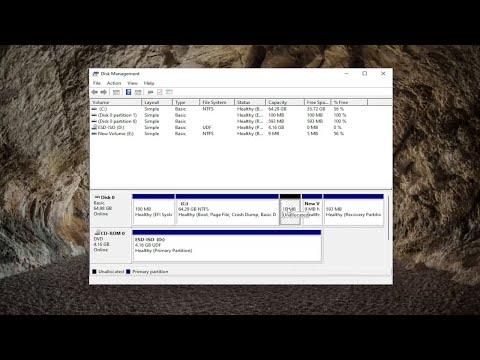It was a seemingly ordinary day when I faced an issue that turned into a frustrating puzzle. I had just purchased a new SSD to upgrade my system’s storage and boost performance. Excitedly, I opened up my computer, carefully installed the SSD, and powered it on, expecting to see it show up immediately in Disk Management so I could format it and get started. To my dismay, it didn’t appear there, nor was it detectable in the BIOS. My initial optimism quickly transformed into confusion and concern.
The first thing I did was to double-check the physical connections. I powered down my PC, opened up the case, and ensured that the SSD was properly connected to both the SATA port and the power supply. Sometimes, a loose cable can cause such problems, so I made sure everything was snugly connected. After closing up the case and powering the computer back on, I went straight to Disk Management. Still, nothing appeared.
I then decided to check the BIOS to see if the SSD was recognized at a hardware level. I restarted the computer and entered the BIOS setup. Navigating through the various tabs, I searched for any signs of the new SSD. Unfortunately, it was nowhere to be found. This was disheartening; it meant that my new SSD wasn’t even being detected at the hardware level.
Realizing that the issue might be more complex than a simple connection problem, I delved into some troubleshooting steps. My next move was to verify that the SSD was indeed compatible with my motherboard. I looked up the specifications for both the SSD and the motherboard, ensuring they were compatible with each other. Everything checked out.
Next, I considered the possibility that the SSD might be faulty. To rule this out, I decided to test the SSD in another computer. I carefully removed the SSD from my machine, and with the help of an external SATA adapter, connected it to a different PC. To my relief, the SSD was recognized immediately on the second computer, showing up in both Disk Management and BIOS. This suggested that the SSD itself was not the issue but rather something specific to my system.
Returning to my original computer, I began to focus on the motherboard and its settings. I updated the motherboard’s BIOS to the latest version. Sometimes, a BIOS update can resolve compatibility issues with newer hardware. After completing the update and restarting the system, I checked Disk Management and the BIOS again. Still, no sign of the SSD.
At this point, I began exploring the possibility of a conflict with existing hardware or software. I made sure all other drives and components were functioning correctly and removed any unnecessary peripherals to rule out potential conflicts. I also checked for any settings in the BIOS that might be affecting the detection of new drives, such as RAID configurations or AHCI settings. I made sure that SATA ports were enabled and configured properly.
With these adjustments made, I performed another restart and checked the BIOS once more. This time, I noticed an option for “Reset to Default Settings” in the BIOS menu. I decided to try this, thinking it might resolve any configuration issues that could be preventing the SSD from being recognized. After applying the default settings and rebooting, the SSD still didn’t appear.
Feeling a bit stuck, I turned to online resources for help. I searched forums and articles related to similar issues. It was there that I found a suggestion to check for driver issues related to the SATA controller. I downloaded and installed the latest drivers for the SATA controller from the motherboard manufacturer’s website. After completing the installation, I restarted the computer and checked the Disk Management tool once more. To my surprise and relief, the SSD appeared in Disk Management. I was now able to initialize and format the drive.
Despite the success, I felt it was crucial to share my experience for others who might face a similar issue. It’s important to approach such problems systematically—checking physical connections, compatibility, hardware functionality, and software settings. Sometimes the issue may be as simple as a loose cable or outdated drivers. In other cases, it might require deeper troubleshooting like BIOS updates or resetting BIOS settings.
If you ever find yourself in a situation where your SSD isn’t showing up in Disk Management or BIOS, don’t lose hope. Start with the basics: check your connections, ensure compatibility, and test the SSD in another system if possible. Update your BIOS and drivers, and consider resetting BIOS settings to default. With patience and a methodical approach, you can usually resolve such issues and get your new SSD up and running smoothly.
